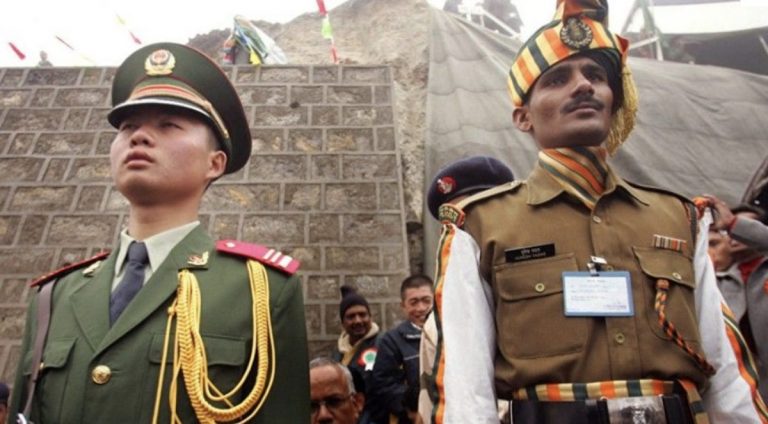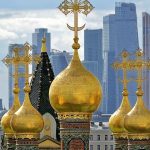Following a recent political chaos in Kathmandu, now everyone’s eye is on high-profile visits from two Asian giants and neighbors of Nepal, India and China. In just seven months, there was a complete upheaval in the form of Nepal’s top leadership towards Delhi. On the one hand, Prime Minister K.P. Oli who has been running a course of struggle with the Modi government and later accused India of regional hegemony has, very recently, softened his stance on the issue and pursued high-level visits from India at the end of 2020. While, his rival and leader of the Unified Communist Party of NepalPushpa Kamal Dahal is also known as Prachanda, who earlier was compassionate about India is now demanding Chinese intervention in ongoing political catastrophe in Kathmandu.
Nepal’s President Bidya Devi Bhandari dissolved the lower house of the parliament on the advice of Prime Minister K.P.Oli on December 20th. She later expressed concerns over the future of Nepal’s constitutional democracy. Oli’s decision has been opposed by a significant section of his own party. Although one might see Oli’s decision to dissolve parliament as a mere political move, but it has long lasting impacts. New Delhi is more concerned about the implications for the federalist structure of the new constitution as current conflict has potential to damage the democratic fabric of the country. This move appears as an opportunity for China to make a friend who is ideologically inclined towards Beijing.
After the dissolution of the lower house of the parliament, Chinese Ambassador Hou Yanqi, immediately met with the Prachanda-Madhav faction and President Bhandari. Beijing also sent a ministerial delegation led by vice-minister of the International Department of the Communist Party of China to Kathmandu Mr. Guo Yezhou within a week of dissolution. Guo’s last visit to Kathmandu was in 2018 after the victory of left alliance. Whether or not Mr. Guo succeeds in trying to keep the Communist Party united, it is clear that Beijing’s top leaders are certainly engage in the politics of Kathmandu.
Earlier, Oli was busy accusing New Delhi, trying to drive him out of the power as under his leadership Nepalese parliament approved the new map of Nepal featuring strategically important Indian territories of Lipulekh, Kalapani and Limpiyadhura. In 2018, Nepal Communist Party came into the power with anti-Indian agenda. But Oli has advanced anti India rhetoric to the military level. Under NCP rule has increased the presence of Nepalese army at the Indian border. But on the other hand, under Oli government China has illegally seized 36 hectares of land distributed among the four districts of Nepal and strategic lands at 11 places around the Nepal. However the Nepalese government of PM Oli is reticent about it.

Last year, an article in The Diplomat quoted Kathmandu-based political analyst Chandra Dev Bhatta that, ” In the past, one could notice China’s involvement in the development of infrastructure but not in soft areas. Of late, China has been penetrating in Nepali politics as well as in society“. To tackle the growing Chinese influence and revitalization of Indo-Nepalese ties, high level delegations, including the RAW chief, army staff chief and India’s foreign secretary visited Kathmandu in the last few months. However, it seems after the dissolution of the lower house of the parliament now the Modi government is skeptical about Oli’s softened stance.
In the same article Bhatta further mentioned, “The Chinese Communist Party provided trainings to the ruling NCP on ‘Xi Jinping Thought’ last year when President Xi was visiting Nepal. In fact, ‘Xi thought’ has become de facto official doctrine for the NCP and Xi somehow is in the process of making himself de facto leader of the NCP like in the 1960s, when Chairman Mao used to be the supreme leader of some of the Communist parties of Nepal and India.”
The constant visit of Chinese delegations to the Kathmandu and Chinese engagement not just with the Nepal Communist Party but also with the other parties which are ideologically inclined towards communism mark China’s domination in the internal politics of Nepal. Although, Beijing doesn’t back any particular party or politician in Nepal yet, But New Delhi is definitely worried about China’s intervention in Nepal’s politics, which will allow Beijing to obtain any political combination that is favorable for Chinese interest.
Author
-

a Senior Doctoral Candidate at Jawaharlal Nehru University, specializes in Inner Asia with a research focus on Central Asian politics spanning the last five years. Her academic contributions include authoring numerous articles on the Eurasian region, showcasing her expertise in the geopolitical intricacies of Central Asia. Shambhavi's dedication to understanding and analysing the evolving political landscape in this region is underscored by her extensive academic background and research pursuits at one of India's premier institutions.
View all posts




